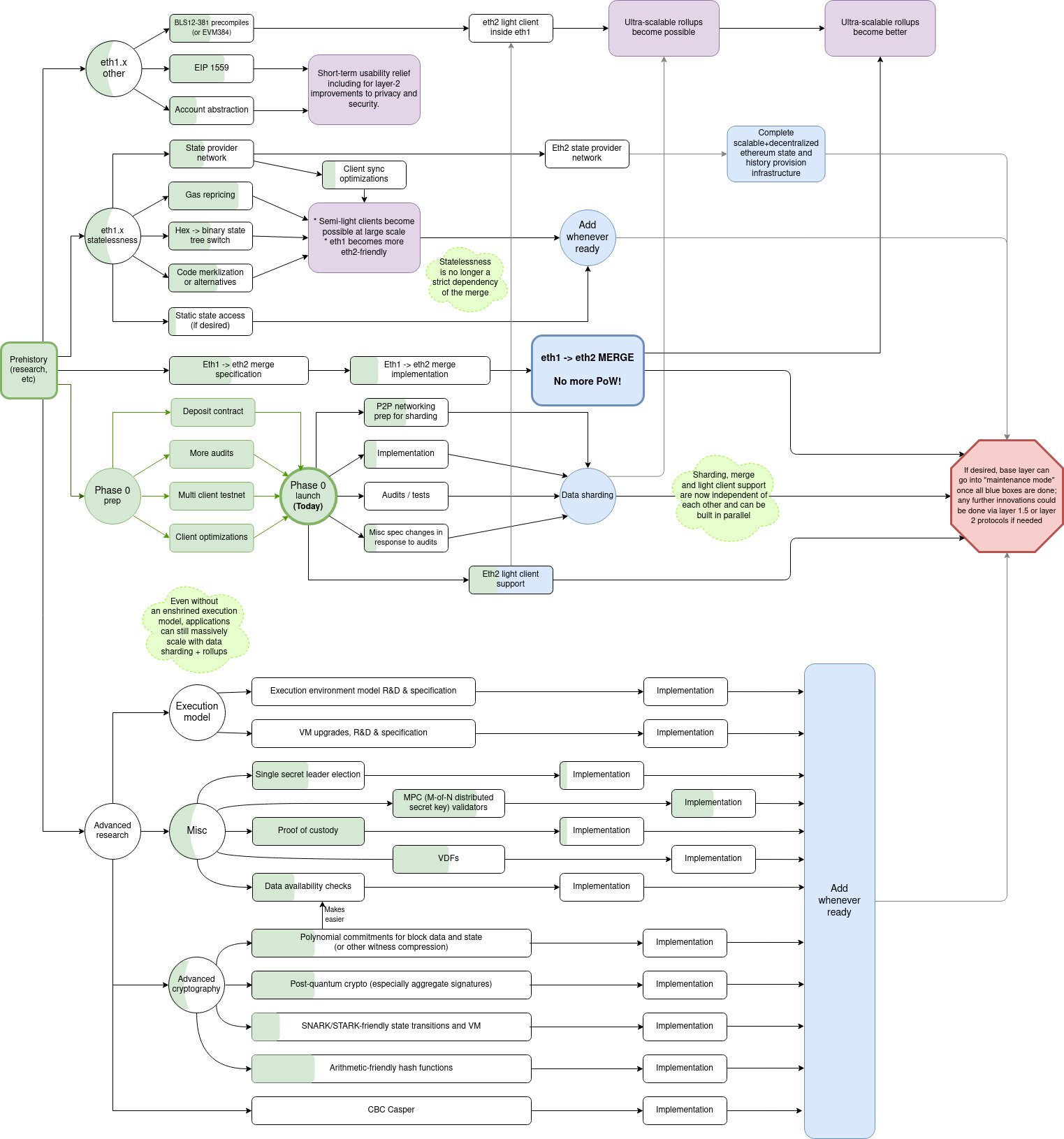Vitalik Buterin Explains What’s Next for Ethereum after the ETH 2.0 Beacon Chain Launch
Sarah Tran Dec 03, 2020 03:28
Ethereum 2.0 Phase 0, also known as the blockchain’s Beacon chain, was launched on Dec. 1. What's next for Ethereum after the launch?

Ethereum 2.0 Phase 0, also known as the blockchain’s Beacon chain, was launched on Dec. 1. The launch of Ethereum 2.0 has introduced a new consensus mechanism to the network—proof-of-stake.

Ethereum 2.0 has been divided into phases, with Phase 0 enabling the staking function of the project. Phase 1 enables the sharding of data, which would enhance scalability and increasing the storage capabilities of the network. Phase 2 enables thousands of transactions per second, as well as transaction sharding.
In March 2020, the co-founder of Ethereum Vitalik Buterin emphasized that research and development on the network were to continue despite challenges faced. He added that upcoming changes would address the issues noted at the time. He said:
“In general, over the last ~2 years there has been a solid shift from "blue sky" research, trying to understand what is possible, to concrete research and development, trying to optimize specific primitives that we know are implementable and implement them.”
The co-founder of Ethereum, Vitalik Buterin has recently published a new roadmap of the next steps for ETH, and what is next for the network. One major change that was noted in the new roadmap is that the three steps can be worked on in parallel, instead of grouping them into different stages. Buterin recently tweeted while pointing to the below roadmap:
“The roadmap I made back in March updated with (very rough and approximate!) progress bars showing what has been done and some of the recent tweaks to the roadmap itself. A lot has been accomplished, but still a lot remains to be done!”

According to Buterin, the progress on data sharding and light clients currently sit below 50 percent, which means that Phase 1 of Ethereum 2.0 would still be one year away. The next significant developments Ethereum has in store for 2021 would involve the launching of 64 shard chains, operating under the proof-of-stake consensus mechanism and validated by ETH stakers.
Ethereum 1.0 is still looking forward to Phase 1.5, where the Ethereum mainnet finally gets to join the Beacon chain as a shard chain, marking a full transition into a proof-of-stake network. This is scheduled to happen in 2021 as well.
Buterin further urged the community to work hard for an Ethereum improvement proposal, EIP-1559, which aims to reduce transaction fees by introducing flat fees with a burn mechanism. EIP-1559 was the first serious proposal to suggest burning fees since Ethereum’s genesis block in 2015.
Image source: Shutterstock.jpg)
